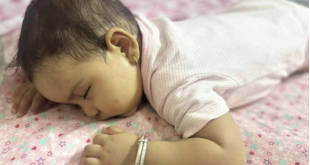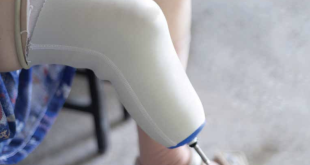In the context of Nepal, it has hardly been a decade since the initiation of laser intervention in the field of dermatology. It was only in 1963 that Leon Goldman used laser in dermatology for the first time, bringing unimaginable therapeutic potential. The scope of laser intervention in the treatment of various skin diseases, as well as skin rejuvenation process, has widened tremendously today. Laser treatments are proving to be significantly effective with amazing end results.
What is LASER?
LASER stands for “light amplification by stimulated emission of radiation”. It is a device that emits a beam of coherent light through optical amplification process. Different types of laser devices are used for different skin conditions. Every laser device has its specific range of wavelength and their specific target cells (e.g. hair follicles, epidermal tissue, dermal tissue, melanin).
 Among the lasers, surgical lasers are most commonly used, especially carbon dioxide laser (Co2 laser) due to its versatility. The wavelength of C02 laser can vary from 9 to 12 um. Co2 lasers can be ablative and non-ablative (fractional). Ablative laser is commonly used to treat conditions like seborrehickeratoses, actinic keratosis, warts, epidermal nevi, syringomas, sebaceous adenomas, xanthelasmas, and many more. It is also widely used for skin rejuvenation treatments. It is a very useful tool in aesthetics to improve mild to moderate wrinkles, discoloration, acne-related scars, burn scars, atrophic scars, stretch marks, and other signs of aging to improve overall skin texture.
Among the lasers, surgical lasers are most commonly used, especially carbon dioxide laser (Co2 laser) due to its versatility. The wavelength of C02 laser can vary from 9 to 12 um. Co2 lasers can be ablative and non-ablative (fractional). Ablative laser is commonly used to treat conditions like seborrehickeratoses, actinic keratosis, warts, epidermal nevi, syringomas, sebaceous adenomas, xanthelasmas, and many more. It is also widely used for skin rejuvenation treatments. It is a very useful tool in aesthetics to improve mild to moderate wrinkles, discoloration, acne-related scars, burn scars, atrophic scars, stretch marks, and other signs of aging to improve overall skin texture.
Other fundamental dermatologic lasers include vascular lasers. Nd-yag laser with wavelength of 1064 nm or 532 nm is the most commonly used vascular laser in Nepal. This laser is used to treat and remove pigmented lesions, such as solar lentigenes, freckles, nevusofota, nevus of ito, and café au lait macules by targeting melanin on or in the skin. In addition to this, pulsed dye laser, alexandrite laser, diode laser, and ruby laser are also frequently used for different indications.
Currently, aesthetic dermatology is booming in Nepal. People are getting more conscious and aware about their skin health. Sophisticated yet user-friendly laser technologies have entered Nepal and are being used for the treatment of a variety of general skin conditions and aesthetics. This technology is gradually reducing the use of traditional rejuvenating procedures like face lifting, as it has minimal intraoperative period and limited recovery time.
How does laser work?
Lasers work by emission of high energy light with a specific wavelength, which when focused on a certain skin condition, produces heat, in turn, destroying the diseased cells, or stimulating healthy cells to regenerate.
How many treatment sessions to expect?
The number of sessions differs according to the type of laser used and the skin condition being used for. For example, for laser hair reduction, patients generally need six to eight treatment sessions, approximately every four to six weeks. Depending on the area of hair reduction (e.g., face, arms, legs, etc.), the number of sessions required may vary, as the thickness and density of hair in different areas of our body is different. For laser tattoo removal, the color of the tattoo and the depth of the pigment influence the duration and outcome of laser treatment. A minimum of six sessions is required, spaced at four to six weeks to attain favorable results. Black pigment takes relatively less time, as compared to colorful ones. Treatment course of vascular lesions depends on the form, size, and location of the lesions, as well as the skin type. Small red vessels can usually be removed in only one to three sessions. Several sessions may be necessary to remove bigger veins and spider veins. Skin resurfacing can be done once every six months to one year for skin rejuvenation. However, laser removal of moles, warts, skin tags, and syringomas need one to two sessions for limited number of lesions.
What are the side effects of laser?
There are no long-term side effects of laser. Laser is a focused targeted therapy which helps in selective treatment of only the diseased cells, leaving the surrounding tissues of the skin unharmed. For example, while getting a laser-assisted hair reduction, light emitted by the laser device though falls on the skin, only the hair follicles present on the epidermis of the skin absorbs the light, producing heat and destroying only the hair follicles, and not the surrounding connective tissues.Nevertheless, some of the major side effects that can be encountered following a laser therapy are redness and irritation and crusting over the treated area after a few days of treatment. Less often, changes in pigmentation of the skin could be observed, but vanishes over time. Mild swelling and itching and infection of the treated area are rarely seen. As the lasers used today are highly advanced, laser treatments are extremely safe and highly effective for most people.
Is the procedure painful?
A sensation of mild heat is felt, rather than pain, during laser procedures. Before doing most laser therapies, a numbing cream is applied over the treatment area, or local anesthesia is given.
Aftercare
Following every laser session, there is approximately five days to a week of downtime. Aftercare ointments, along with skin care, is prescribed, which needs to be followed for minimizing downtime and increasing efficacy of the treatment. One needs to avoid sun exposure with adequate application of sun protection for optimal results of the therapy.
Take away
Laser treatment has become one of the fastest growing medical procedures. These treatments are being offered by several hospitals, skin clinics, and health centers, as well as medical-spas and salons, but when these procedures are done by someone without the right training, one can end up with permanent skin damage. When performed by an experienced and trained laser surgeon, laser surgery is a safe procedure. An experienced laser surgeon will carefully evaluate the skin and provide appropriate treatment options for the condition and aesthetic goals. Remember to always follow the advice of your doctor, both before and after treatment, in order to get the best results.
 Medicosnext
Medicosnext




